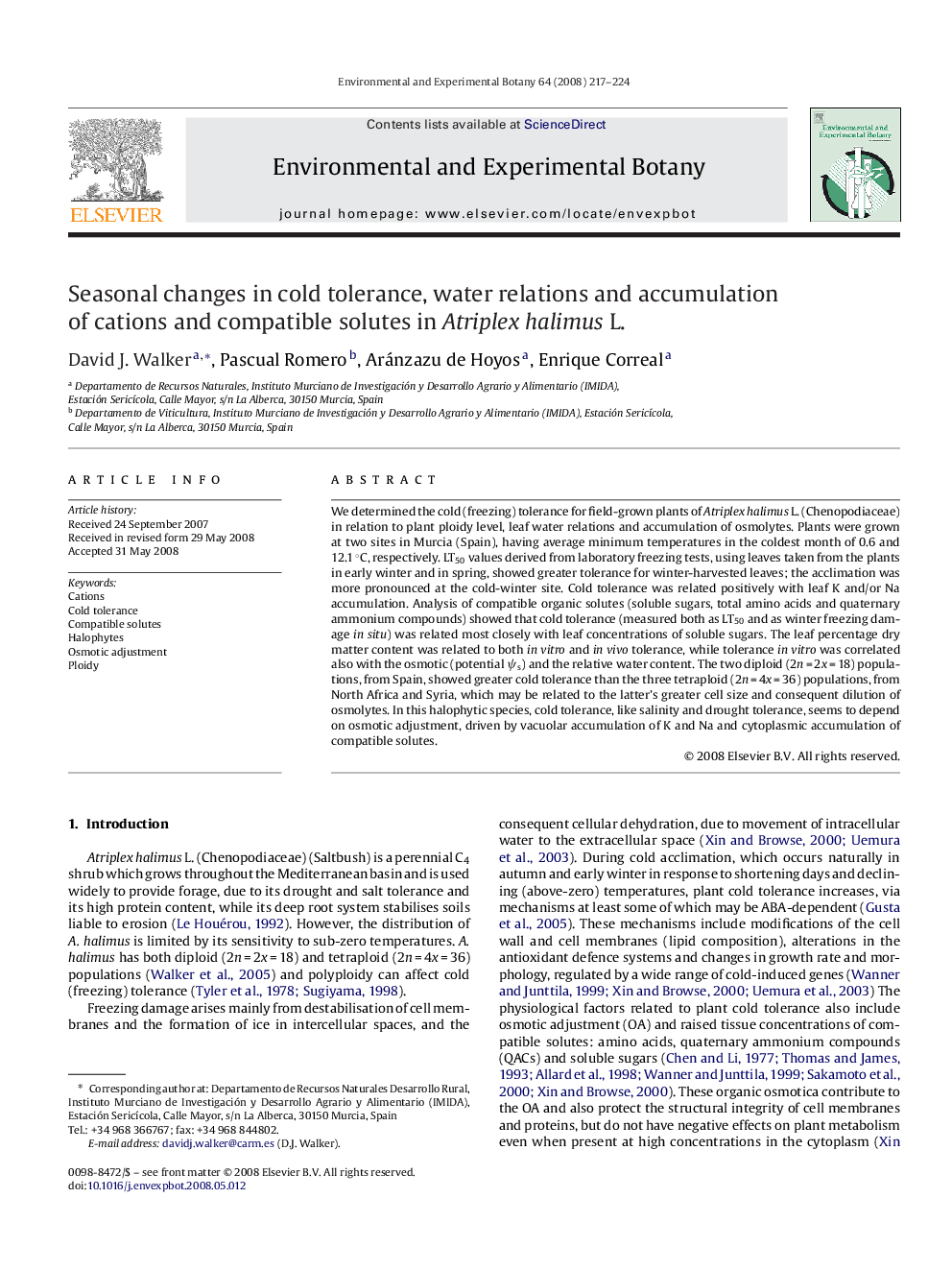| Article ID | Journal | Published Year | Pages | File Type |
|---|---|---|---|---|
| 4555321 | Environmental and Experimental Botany | 2008 | 8 Pages |
We determined the cold (freezing) tolerance for field-grown plants of Atriplex halimus L. (Chenopodiaceae) in relation to plant ploidy level, leaf water relations and accumulation of osmolytes. Plants were grown at two sites in Murcia (Spain), having average minimum temperatures in the coldest month of 0.6 and 12.1 °C, respectively. LT50 values derived from laboratory freezing tests, using leaves taken from the plants in early winter and in spring, showed greater tolerance for winter-harvested leaves; the acclimation was more pronounced at the cold-winter site. Cold tolerance was related positively with leaf K and/or Na accumulation. Analysis of compatible organic solutes (soluble sugars, total amino acids and quaternary ammonium compounds) showed that cold tolerance (measured both as LT50 and as winter freezing damage in situ) was related most closely with leaf concentrations of soluble sugars. The leaf percentage dry matter content was related to both in vitro and in vivo tolerance, while tolerance in vitro was correlated also with the osmotic (potential ψs) and the relative water content. The two diploid (2n = 2x = 18) populations, from Spain, showed greater cold tolerance than the three tetraploid (2n = 4x = 36) populations, from North Africa and Syria, which may be related to the latter's greater cell size and consequent dilution of osmolytes. In this halophytic species, cold tolerance, like salinity and drought tolerance, seems to depend on osmotic adjustment, driven by vacuolar accumulation of K and Na and cytoplasmic accumulation of compatible solutes.
